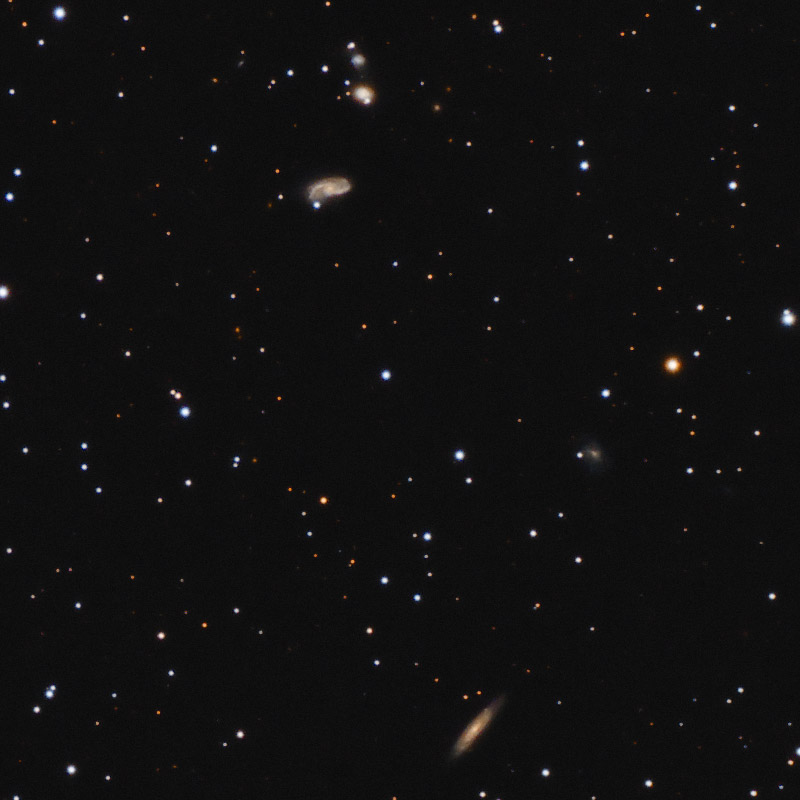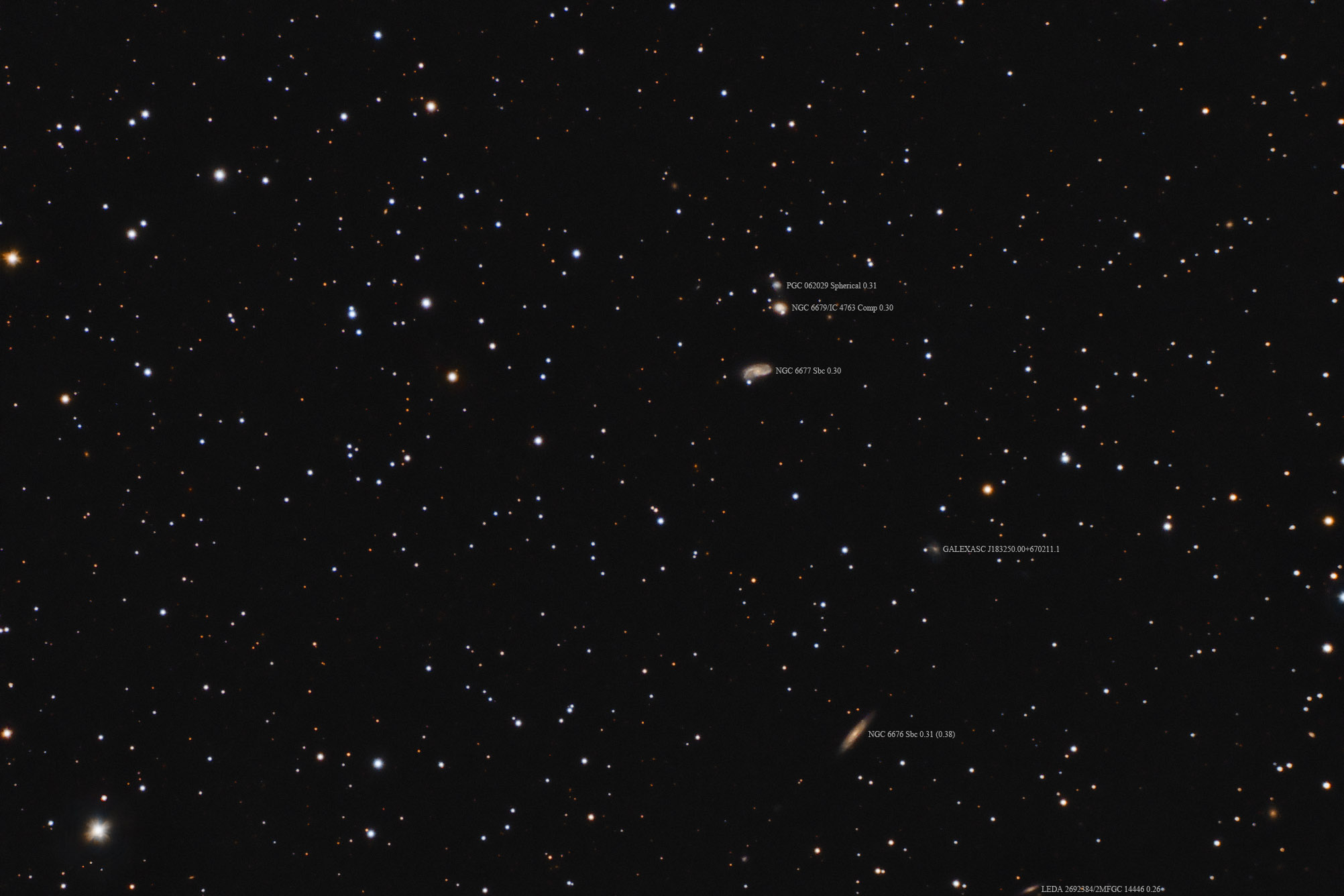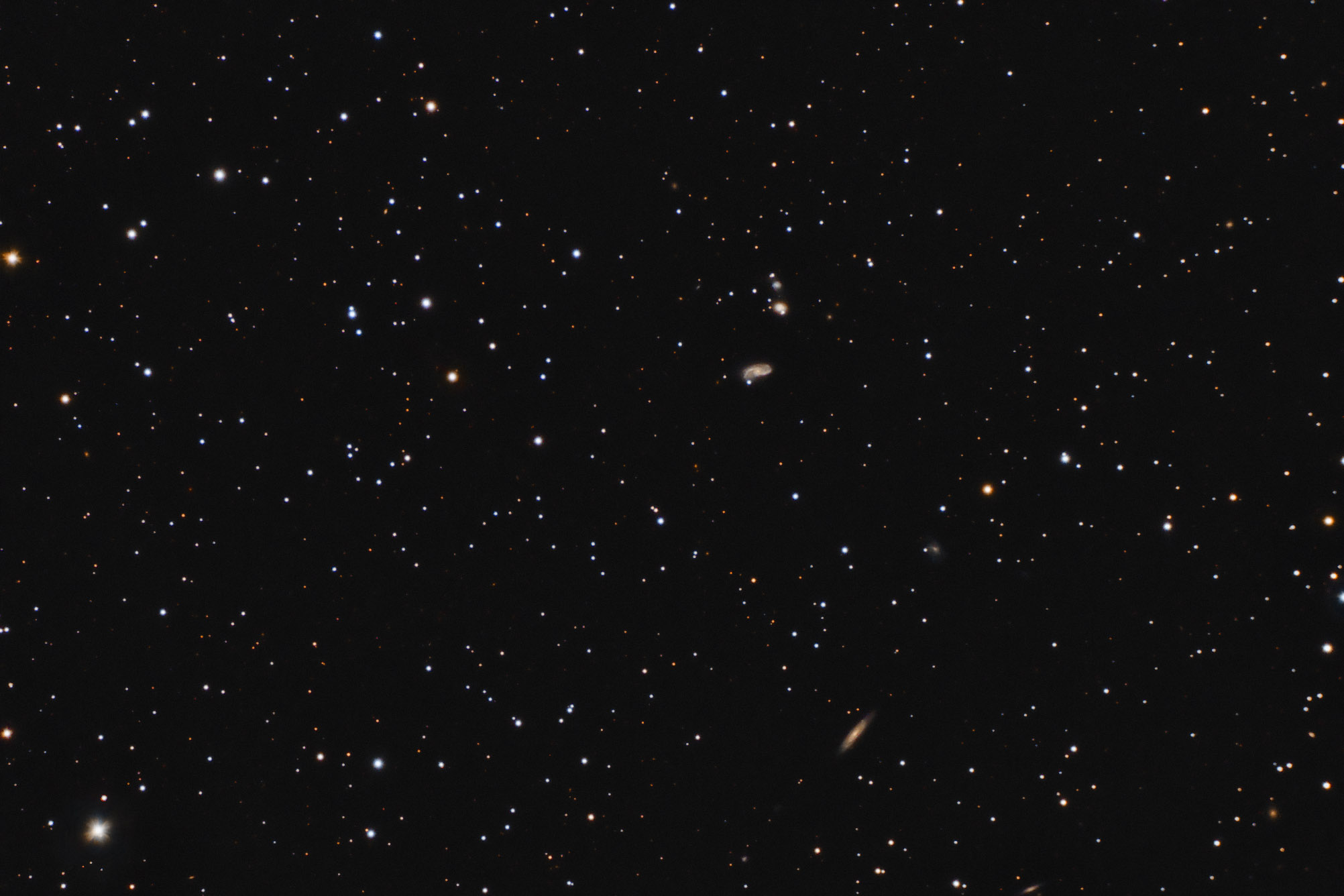| Description | Images |
Object name: NGC6677Designation(s): NGC6677, NGC6679, NGC6676, There appears some debate over which galaxy is NGC 6677, NGC6679 and IC 4763. You can read all about it at http://cseligman.com/text/atlas/ngc66a.htm#6677 I didn't know of this issue as all of my sources, NED, SIMBAD, The Sky 6 Pro agreed with Seligman and made no mention of the issue. Because of this, the discovery dates of these is a bit confusing. I'm going with Seligman and saying all were discovered by Lewis Swift with NGC 6676 on May 30, 1886, NGC 6677 on June 8 1885 and NGC 6679 on October 25, 1885. IC 4763 is a prediscovery of NGC 6679 by Guillaume Bigourdan sometime in 1860. Related Designation(s):2MASS J18330958+6657346, 2MASS J18330986+6657329, 2MASS J18331031+6657301, 2MASS J18333052+6708143, 2MASS J18333573+6706372, 2MASS J18333614+6706382, 2MASX J18331000+6657324, 2MASX J18333046+6708144, 2MASX J18333612+6706384, 2MFGC 14456, ARK 541, CGCG 1833.2+6655, CGCG 1833.6+6706 NED01, CGCG 1833.7+6704, CGCG 322-045, CGCG 322-046 NED01, CGCG 322-047, CGCG 323-001 NED01, CGCG 323-002, GALEXASC J183309.94+665731.9 , GALEXASC J183330.72+670814.5 , HDCE 1041 NED001, HDCE 1041 NED002, HDCE 1041 NED003, IC 4763, IRAS 18331+6655, IRAS F18331+6655, ISOSS J18330+6655, ISOSS J18336+6706, KAZ 208, KAZ 209, KUG 1833+669, KUG 1833+670, LDCE 1305 NED002, LDCE 1305 NED003, LDCE 1305 NED004, MCG +11-22-054, MCG +11-22-055, MCG +11-22-057, NGC 6676, NGC 6677, NGC 6679, NGC6676, NGC6677, NGC6679, NVSS J183309+665737, NVSS J183330+670813, NVSS J183336+670637, PGC 062021, PGC 062026, PGC 062035, UGC 11286, UGC 11288 NED01, UGC 11290, UZC J183310.1+665732, UZC J183330.3+670814, UZC J183335.9+670637, VV 672 NED01, VV 672 NED03, WN B1833+6655, WN B1833+6704A, WN B1833+6704B, [SLK2004] 1480, [SLK2004] 1485, | Permanent link: https://images.mantrapskies.com/catalog/NGC/NGC6677-NGC6679-NGC6676/NGC6677L4X10RGB2X10CROP.JPG |


